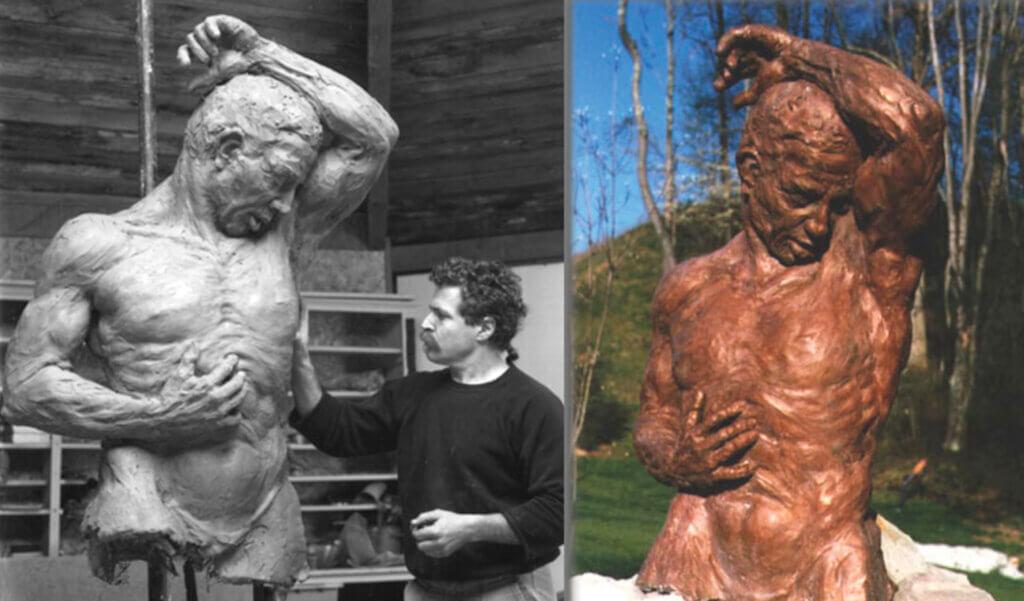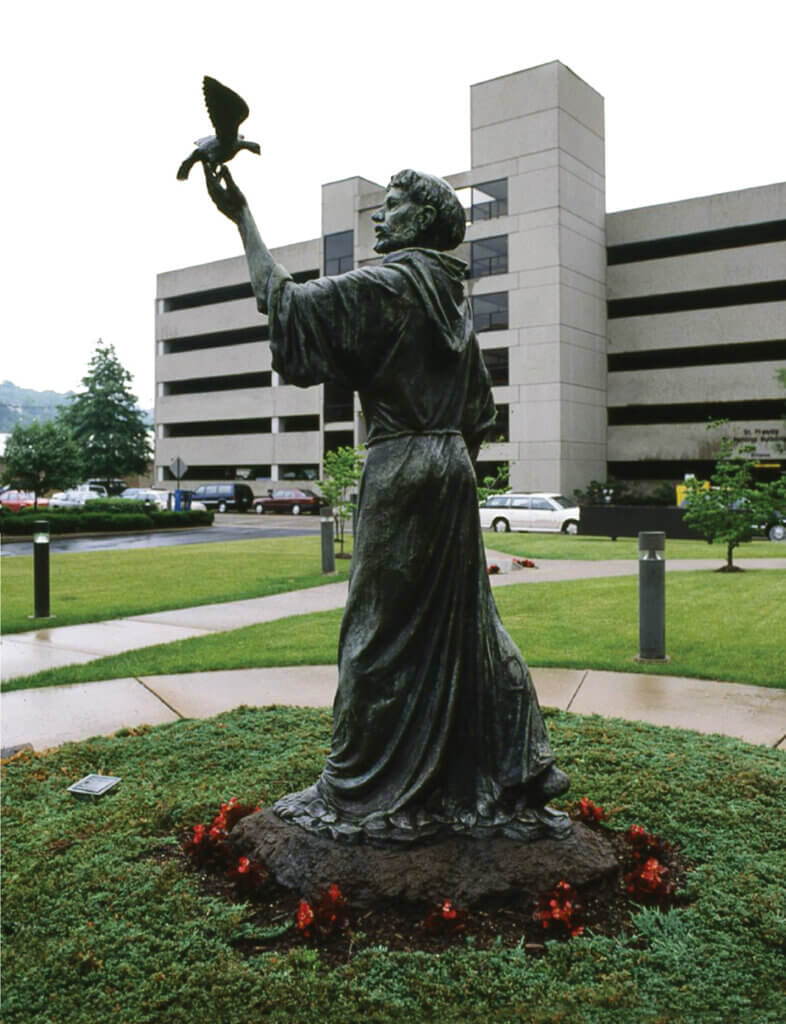Sculptor Bill Hopen uses bronze to bring rich stories to life.

photos courtesy of BILL HOPEN
For Bill Hopen, bringing stories to life through sculpture has become one of the most meaningful elements of being an artist. Using the strong, yet malleable material of bronze as his preferred medium, Hopen carefully researches the backgrounds of his subjects before crafting his sculptures that withstand the test of time.
As a college art major, Hopen initially studied painting. After graduation, he found work as a carpenter and quickly realized he was good at making things with his hands. He considered this trade his graduate school education, as he learned about all types of materials and their physical construction.

Originally from New York City, Hopen found beauty, inspiration, and economic freedom in the Mountain State. “In West Virginia, I found all these beautiful hardwoods available in the forest,” Hopen says. “I had chainsaws and chisels, and I began carving.” With some local attention on his work, residents suggested he teach lessons. Soon thereafter, he became an artist in residence in Clarksburg, where he worked for two years. With a studio and a small budget, Hopen taught a variety of art techniques for 20 hours each week in the public school system and in adult education. The schedule allowed him the freedom to create and sell art, which gave him a taste of life as a working artist.
He began creating small commissioned pieces—then the Clarksburg Historical Society brought him his first large commission: a piece on immigrants for the courthouse plaza. While he crafted the subjects in ferro-cement, the newspaper snapped a photograph of him in action and published it in the Sunday edition. The very next day, he got a call requesting a bronze statue of St. Francis de Assisi for a hospital in Charleston. “I studied his life and read a few books about him,” Hopen says. “He became alive to me, and I found that every work you do is a learning experience. That became my strong suit—when I was sought after to do art work, it would have an expression and a meaning because I would really get involved with the story I was telling. I try to bring emotion into it.”


One commission in bronze led to another and another over the years. Hopen had hoped his art would open doors, but he never dreamed it would lead him to his current life partner as well, a fellow sculptor named Ai Qiu. As their artistic successes have ebbed and flowed, they have lifted one another, offering assistance and support for their creative endeavors.

Hopen’s work can be found all throughout the Mountain State, including a stone carving on the Davis & Elkins College campus, a marble Mother’s Day memorial in Grafton, a bronze Senator Robert C. Byrd statue in the West Virginia State Capitol, and a bronze Hawks Nest Tunnel Disaster memorial piece at Tamarack. To see his portfolio, visit billhopen.com.









Leave a Reply